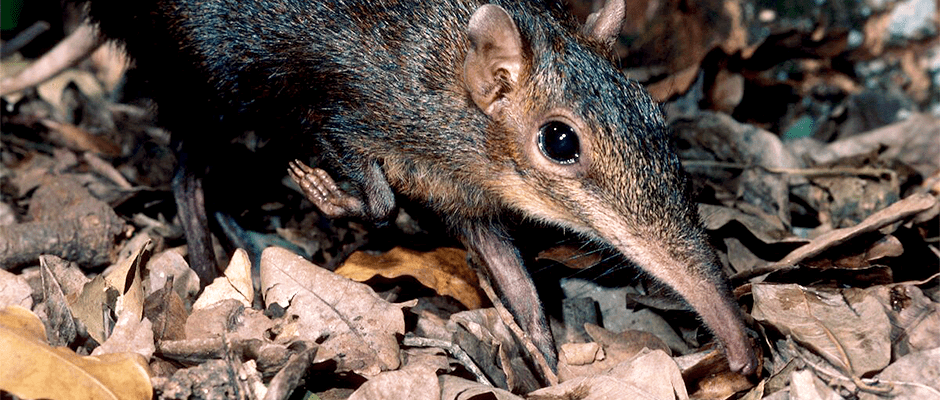Share this article
California academy added 85 new species in 2017
Add these to your 12 days of Christmas list. Thirteen nudibranchs, seven spiders, three new scorpions and a shrew with a really big nose.
These are some of the 85 newly identified plant and animal species researchers at the California Academy of Sciences added in 2017. The list of species ranges from 16 flowering plants to a deepwater coral, all of which were described by more than a dozen of the academy’s scientists exploring five continents and three oceans.
“Despite tireless efforts to explore from the far-flung corners of the globe to our backyard crannies,” Academy Chief of Science Shannon Bennett said in a press release announcing the list, “scientists estimate that more than 90 percent of species have yet to be discovered — with many going extinct before we even know they exist. We are not only losing members of the tree of life; we are also forfeiting potential breakthroughs in medicine, agricultural pollinators, water purifiers and many other critical components of a healthy planet.”
The species include:
Giant elephant-shrew
More closely related to elephants than true shrews, the Rhynchocyon stuhlmanni has regained its status as a full species after being reclassified as a sub-species of giant elephant-shrew, also known as a giant sengi. The white-tailed species inhabits the Congo Basin and western Uganda.
Club-tailed scorpions, peaceful spiders and blood-sucking ants
A revision of a large group of neotropical club-tailed scorpions led to three new descriptions of colorful species, and two new groups, throughout the Americas.
Newly discovered spiders include two false wolf spiders, Devendra saama and Devendra amaiti, found in the southern highlands of Sri Lanka. Their names mean “peace” in Sinhalese and Tamil to honor the end of that country’s civil war.
Researchers also discovered seven new species of so-called “Dracula ants,” famous for drinking the blood of their larvae. They include six from Madagascar and a species from Taiwan that spends its entire life beneath the soil or inside rotten logs.
Deep-sea discoveries
Researchers discovered new species of so-called “ghost sharks,” some of which come from depths of more than 7,000 feet. As commercial fisheries plumb deeper waters, biologists say, these unknown species are appearing more and more.
A coral with eight-tentacles from 1,000 feet beneath the surface revealed rectangular spicules, qualifying it as a unique species of octocoral.
Academy curator of invertebrate zoology Dr. Terry Gosliner added to his list of 1,000 discovered species of sea slugs with 13 more. Eight were described from the Philippines and are members of the bat-wing family which, unlike most sea slugs, are capable of swimming. He named one species Siphopteron dumbo because of its resemblance to the flying elephant.
Researchers also added 22 new fish species, including 20 new reef fish, a catfish from China and a butterfly fish with a black fin spine.
Header Image: The elephant shrew is one of 85 newly identified plants and animals added in 2017 by the California Academy of Sciences. ©Jabruson/NPL/Minden Pictures








